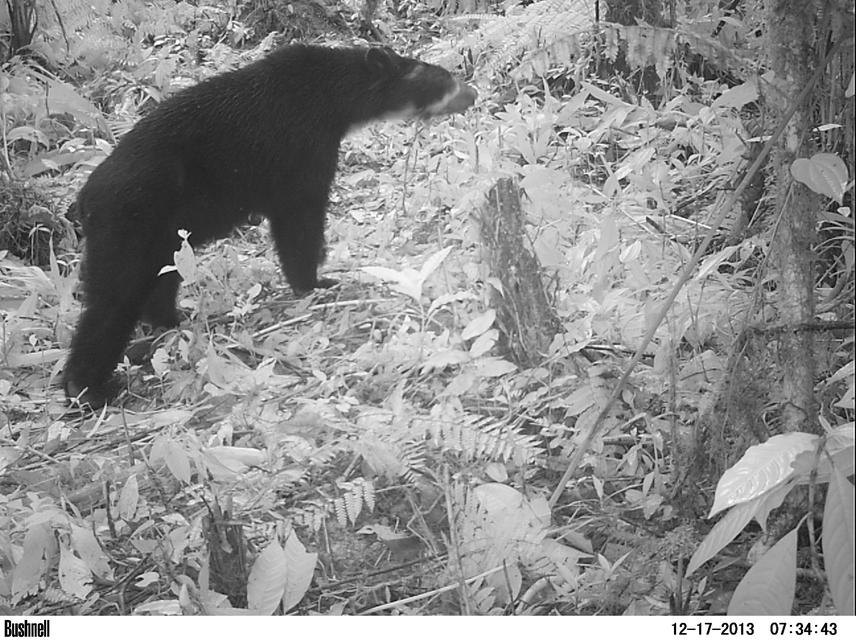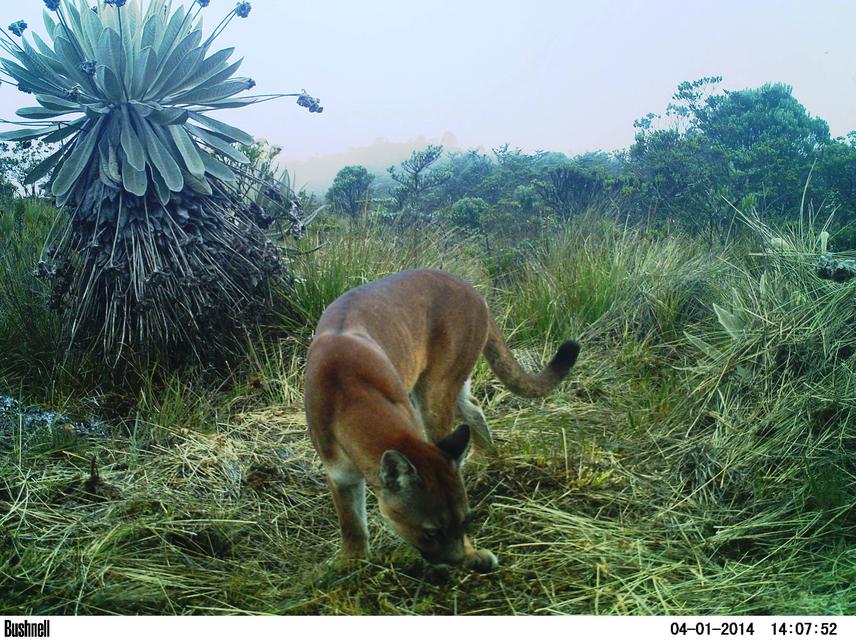Carlos Herney Caceres Martínez
Given the contemporary processes of transformation, loss and fragmentation of natural habitats, the protected areas are becoming more and more isolated. Although many species require large extensions to ensure their survival, they far exceed the size of the protected areas, which has very large repercussions on their conservation and that of biodiversity in general terms. Our objective is to develop and evaluate systemic and hierarchically, a model of connectivity between the Natural National Park; Tamá, the Cocuy, Pisba and the sanctuary of Fauna and Flora Guanentá high Río Fonce in the eastern Cordillera of Colombia, through the use of large carnivores such as the Andean Bear (Tremarctos ornatus) and the Puma (Puma concolor). To generate a proposal for the effective implementation of a biological corridor that ensures connectivity, and thus ensure the genetic flow and conservation of the populations of these species, the biodiversity and associated ecosystems within the Cordillera Oriental of Colombia

Given the contemporary processes of transformation, loss and fragmentation of natural habitats, the protected areas are becoming more and more isolated. However, many species require large areas that far exceed the size of these, which causes loss of individuals, genetic diversity, and affects the health of ecosystems, the ecological and evolutionary processes of species and their populations. Our objective is to develop and evaluate systemic and hierarchically a functional connectivity model between the national Natural Park; Tamá, the Cocuy, Pisba and the sanctuary of Fauna and Flora Guanentá high Río Fonce in the eastern Cordillera of Colombia, in the departments of Santander, Norte de Santander and Boyacá, through the use of large carnivores such as the Andean Bear (Tremarctos ornatus) and the Puma (Puma concolor).

In order to generate a proposal for the effective implementation of a biological corridor and the prioritization of conservation/restoration areas that ensure connectivity, and thus the genetic flow and the conservation of the populations of these species, the Biodiversity and associated ecosystems within the eastern Cordillera of Colombia. Training workshops will be held on the monitoring of these species, the management of conflict with the communities, Phototraps and the use of GIS with each of the 4 protected areas and the three regional autonomous corporations involved in the area; CAs; CORPONOR, and CORPOBOYACA. We will be described Structural connectivity, based on landscape metrics such as configuration, connectivity and fragment isolation; Percentage of coverage (Pland), average fragment size (MPS), index of the largest fragment (LPI), fragment density (PD); Proximity index (MPI), Connectedness and cohesion (COHESION), using the program FRAGSTATS 3.3. For the calculation of functional connectivity; Dispersion flow models will be used using CIRCUITSCAPE 4.0, and resistance maps will be combined and then the most important landscape portions will be classified to ensure connectivity through the tool zoning algorithm. CONNECT from the FRAGSTATS 3.3 program.
In order to evaluate the reliability of the corridor we will evaluate the probability of spatially explicit occupation of the species of interest in the prioritized areas, by means of a systemic and hierarchical pattern using trap cameras depending on the n that we have at this stage of Project of the n that we have at this stage of the project, between 100-135 camera trap. Thus generating a robust proposal for the implementation of a biological corridor with the best characteristics, and the prioritization of conservation areas.